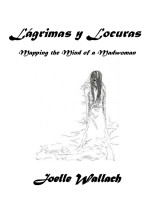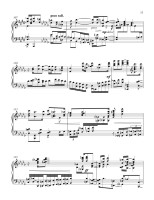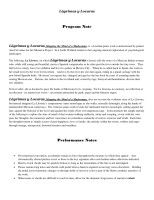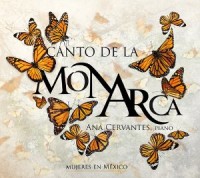Lágrimas y Locuras, Mapping the Mind of a Madwoman 9'
…a piece of Lisztian scope that attempts to construct the thoughts of a disturbed woman as she walks forever. …fully entering into the spirit of narrating a story while painting a distraught emotional state. The anguished, dissonant climax is powerful.” —Colin Clarke, Fanfare Magazine
In Lágrimas y Locuras, Mapping the Mind of a Madwoman, Joelle Wallach returns to her fascination with music which expresses a specific psychological landscape. Based on the Mexican folksong La Llorona, Las Lagrimas locuras reveals the infuriated interior monologue of La Llorona herself as she haunts the banks of Mexican waterways, railing against her fate, against the betrayal of her lover and against the result of her own impetuous rage.
La Llorana is a folksong which tells the story of a Mexican Indian woman who, while still young and beautiful, meets a great Spanish conquistador as he rides past the river outside her tiny town. They fall in love, marry, have two children and live in a palace in Mexico City. When he is called back to Spain, she waits in her small town by the river for his return. And it is by the river she sees him again, riding by in a grand carriage with his new blond Spanish bride. He doesn’t seem to recognize her, changed and aged as she has been by her years of yearning and the searing Mexican sun. Furious, she rushes to the riverbank and, crazed by rage, betrayal and humiliation, drowns their two children.
Forever after, she is doomed to pace the banks of Mexican rivers, weeping. For La Llorona, no memory, no reflection or recollection – no matter how sweet – can remain untouched by guilt, anger and the bitterest regret.
Wallach’s Lágrimas y Locuras, Mapping the Mind of a Madwoman, does not recount the story of La Llorona, but instead imagines La Llorona’s tempestuous inner monologue as she walks, eternally distraught, along the banks of innumerable Mexican waterways. Lágrimas y Locuras deconstructs the simple melody of the folksong to explore the state of mind of that woman walking endlessly, alone and weeping, at war with her own past, her thoughts, her memories and conscience in a relentless avalanche of sorrow, remorse and wrath. Each time her thoughts return to simple scenes of past happiness, love or family, the melody within her twists, writhes and rages through strange, unexpected, distorted textures and tonalities.










